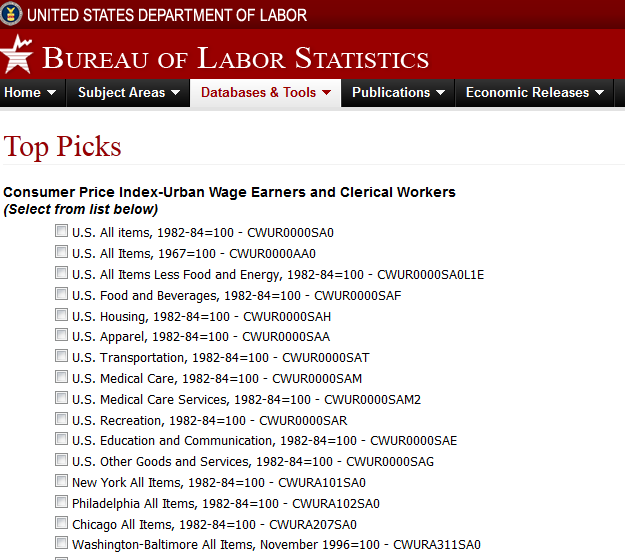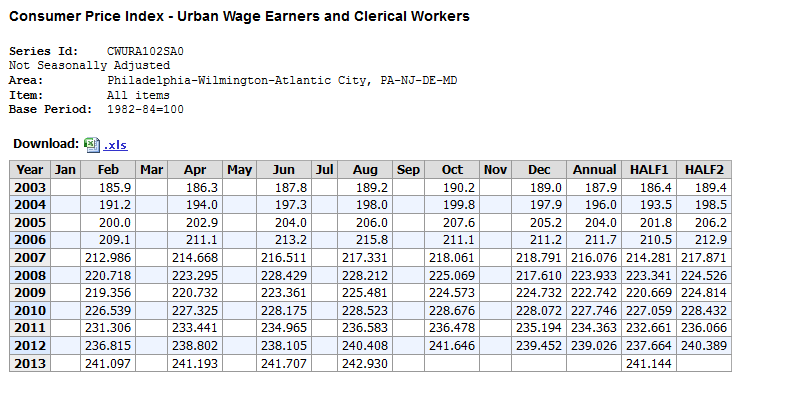Difference between revisions of "Consumer Price Index, Urban Wage Earners and Clerical Workers (CPIW)"
From Knowledge base
(→Bureau of Labor Statistics - Consumer Price Index (CPI)) |
|||
| (5 intermediate revisions by one user not shown) | |||
| Line 1: | Line 1: | ||
| − | |||
| − | |||
| − | |||
| − | |||
| − | |||
| − | |||
== Bureau of Labor Statistics - Consumer Price Index (CPI)== | == Bureau of Labor Statistics - Consumer Price Index (CPI)== | ||
The information below, was taken from the DOL website. The information at the Department of Labor as you can see groups labor into geographic location and types of workers. Specialtity workers or circumstances such as a shortage of a particular vocation are not separately taken into consideration. | The information below, was taken from the DOL website. The information at the Department of Labor as you can see groups labor into geographic location and types of workers. Specialtity workers or circumstances such as a shortage of a particular vocation are not separately taken into consideration. | ||
| Line 15: | Line 9: | ||
[[File:CPI-Philadelphia.png]]<ref>United States Department of Labor, Bureau of Labor Statistics; http://data.bls.gov/cgi-bin/surveymost</ref> | [[File:CPI-Philadelphia.png]]<ref>United States Department of Labor, Bureau of Labor Statistics; http://data.bls.gov/cgi-bin/surveymost</ref> | ||
| − | == | + | ==Related Pages== |
| − | + | [[Escalation and Economic Indexes]] | |
| + | [[Employment Cost Index (ECI)]] | ||
| − | + | [[Producer Price Index (PPI)]] | |
| − | [[ | + | |
== References and Notes == | == References and Notes == | ||
<References/> | <References/> | ||
Latest revision as of 11:08, 23 October 2013
Bureau of Labor Statistics - Consumer Price Index (CPI)
The information below, was taken from the DOL website. The information at the Department of Labor as you can see groups labor into geographic location and types of workers. Specialtity workers or circumstances such as a shortage of a particular vocation are not separately taken into consideration.
Related Pages
Escalation and Economic Indexes
References and Notes
- ↑ United States Department of Labor, Bureau of Labor Statistics; http://data.bls.gov/cgi-bin/surveymost?cw
- ↑ United States Department of Labor, Bureau of Labor Statistics; http://data.bls.gov/cgi-bin/surveymost

